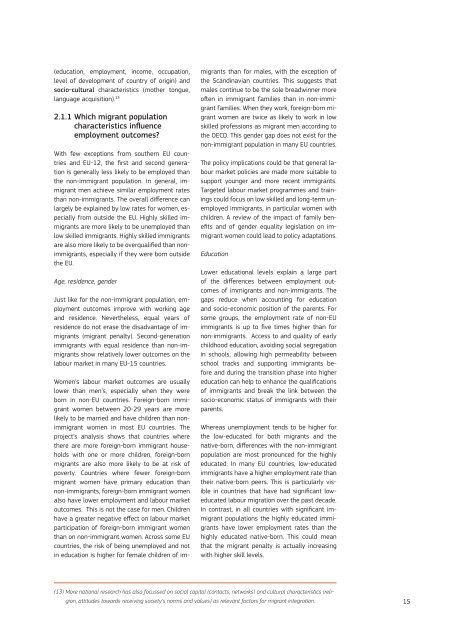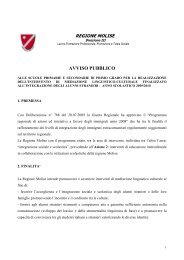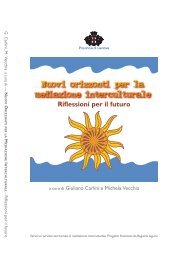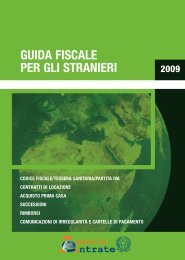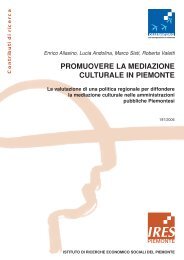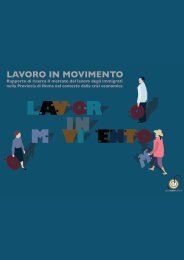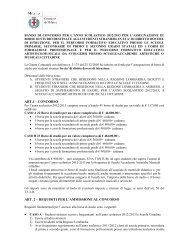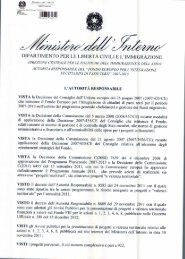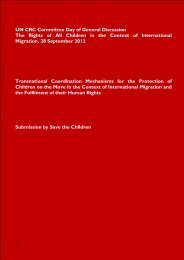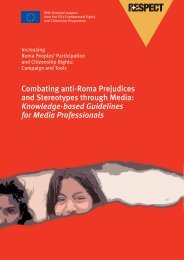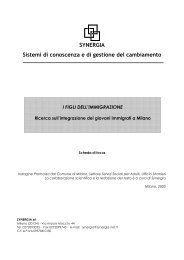Using EU Indicators of Immigrant Integration - European ...
Using EU Indicators of Immigrant Integration - European ...
Using EU Indicators of Immigrant Integration - European ...
- No tags were found...
Create successful ePaper yourself
Turn your PDF publications into a flip-book with our unique Google optimized e-Paper software.
(education, employment, income, occupation,level <strong>of</strong> development <strong>of</strong> country <strong>of</strong> origin) andsocio-cultural characteristics (mother tongue,language acquisition). 132.1.1 Which migrant populationcharacteristics influenceemployment outcomes?With few exceptions from southern <strong>EU</strong> countriesand <strong>EU</strong>-12, the first and second generationis generally less likely to be employed thanthe non-immigrant population. In general, immigrantmen achieve similar employment ratesthan non-immigrants. The overall difference canlargely be explained by low rates for women, especiallyfrom outside the <strong>EU</strong>. Highly skilled immigrantsare more likely to be unemployed thanlow skilled immigrants. Highly skilled immigrantsare also more likely to be overqualified than nonimmigrants,especially if they were born outsidethe <strong>EU</strong>.Age, residence, genderJust like for the non-immigrant population, employmentoutcomes improve with working ageand residence. Nevertheless, equal years <strong>of</strong>residence do not erase the disadvantage <strong>of</strong> immigrants(migrant penalty). Second-generationimmigrants with equal residence than non-immigrantsshow relatively lower outcomes on thelabour market in many <strong>EU</strong>-15 countries.Women’s labour market outcomes are usuallylower than men’s, especially when they wereborn in non-<strong>EU</strong> countries. Foreign-born immigrantwomen between 20-29 years are morelikely to be married and have children than nonimmigrantwomen in most <strong>EU</strong> countries. Theproject’s analysis shows that countries wherethere are more foreign-born immigrant householdswith one or more children, foreign-bornmigrants are also more likely to be at risk <strong>of</strong>poverty. Countries where fewer foreign-bornmigrant women have primary education thannon-immigrants, foreign-born immigrant womenalso have lower employment and labour marketoutcomes. This is not the case for men. Childrenhave a greater negative effect on labour marketparticipation <strong>of</strong> foreign-born immigrant womenthan on non-immigrant women. Across some <strong>EU</strong>countries, the risk <strong>of</strong> being unemployed and notin education is higher for female children <strong>of</strong> immigrantsthan for males, with the exception <strong>of</strong>the Scandinavian countries. This suggests thatmales continue to be the sole breadwinner more<strong>of</strong>ten in immigrant families than in non-immigrantfamilies. When they work, foreign-born migrantwomen are twice as likely to work in lowskilled pr<strong>of</strong>essions as migrant men according tothe OECD. This gender gap does not exist for thenon-immigrant population in many <strong>EU</strong> countries.The policy implications could be that general labourmarket policies are made more suitable tosupport younger and more recent immigrants.Targeted labour market programmes and trainingscould focus on low skilled and long-term unemployedimmigrants, in particular women withchildren. A review <strong>of</strong> the impact <strong>of</strong> family benefitsand <strong>of</strong> gender equality legislation on immigrantwomen could lead to policy adaptations.EducationLower educational levels explain a large part<strong>of</strong> the differences between employment outcomes<strong>of</strong> immigrants and non-immigrants. Thegaps reduce when accounting for educationand socio-economic position <strong>of</strong> the parents. Forsome groups, the employment rate <strong>of</strong> non-<strong>EU</strong>immigrants is up to five times higher than fornon-immigrants. Access to and quality <strong>of</strong> earlychildhood education, avoiding social segregationin schools, allowing high permeability betweenschool tracks and supporting immigrants beforeand during the transition phase into highereducation can help to enhance the qualifications<strong>of</strong> immigrants and break the link between thesocio-economic status <strong>of</strong> immigrants with theirparents.Whereas unemployment tends to be higher forthe low-educated for both migrants and thenative-born, differences with the non-immigrantpopulation are most pronounced for the highlyeducated. In many <strong>EU</strong> countries, low-educatedimmigrants have a higher employment rate thantheir native-born peers. This is particularly visiblein countries that have had significant loweducatedlabour migration over the past decade.In contrast, in all countries with significant immigrantpopulations the highly educated immigrantshave lower employment rates than thehighly educated native-born. This could meanthat the migrant penalty is actually increasingwith higher skill levels.(13) More national research has also focussed on social capital (contacts, networks) and cultural characteristics (religion,attitudes towards receiving society’s norms and values) as relevant factors for migrant integration.15


